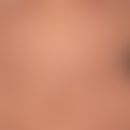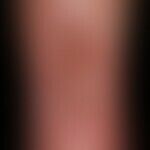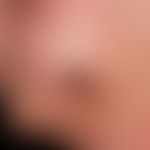Synonym(s)
DefinitionThis section has been translated automatically.
General informationThis section has been translated automatically.
You might also be interested in
EtiologyThis section has been translated automatically.
Various essential indirect or direct triggers are possible for the development of chronic wounds (> 3 months) (see skin ulcer).
Regardless of their genesis, chronic wounds show a largely uniform pathophysiological pattern in their healing process. Tissue hypoxia, neurological disorders (reduced or absent sensory function), infections, malnutrition, disturbed moisture balance, excess of proteases and deficiency of growth factors as well as a dysbalance of macrophage and leukocyte function play a decisive role.
A special etiopathogenetic role is played by neuropathic ulcers, which develop in skin areas where schema sensation and sympathetic skin innervation are disturbed.
Complication(s)This section has been translated automatically.
Wound infections are common, especially in immunocompromised patients or in diabetic foot. In addition to Gram-positive staphylococci (see also MRSA) and streptococci, Gram-negative bacteria such as Pseudomonas aeruginosa, Proteus vulgaris, Enterobacter cloacae and anaerobes of the Bacteroides group play an increasing role.
Contact sensitization (type IV sensitization). In a group of patients with chronic venous leg ulcer the following contact sensitizations were observed (status 2015):
- Peru balsam (14.8%)
- Fragrance mix I (11.5%)
- Amerchol L 101 (9.7%)
- tertiary butyl hydroquinone (8.7%)
- Wool wax alcohols (7.8%)
- Fragrance mix II (6.8%)
- Rosin (6.6%)
External therapyThis section has been translated automatically.
- The aim of phase-oriented local therapy is to return a chronic wound to an active wound with a physiological healing process. The principle of moist wound treatment with the aid of hydroactive wound dressings has proved to be helpful here.
- The acronym "TIME" was coined for wound treatment, which is a schematic guideline for better understanding of the healing of a chronic wound.
- T (tissue management): stands for the debridement of necrotic tissue (see wound debridement below)
- I (inflammation and infection): inflammation and infection control
- M (moisture balance): balancing and regulating the moisture balance
- E (epithelial advancement): Promotion of epithelialization.
Notice! In general, it is recommended to treat the wound itself and the wound environment as indifferently as possible to prevent complicated sensitisation (see wound treatment below).
Internal therapyThis section has been translated automatically.
NaturopathyThis section has been translated automatically.
In naturopathy, bee honey plays an important role in the treatment of wounds. see also under wound treatment. see also cod liver oil.









